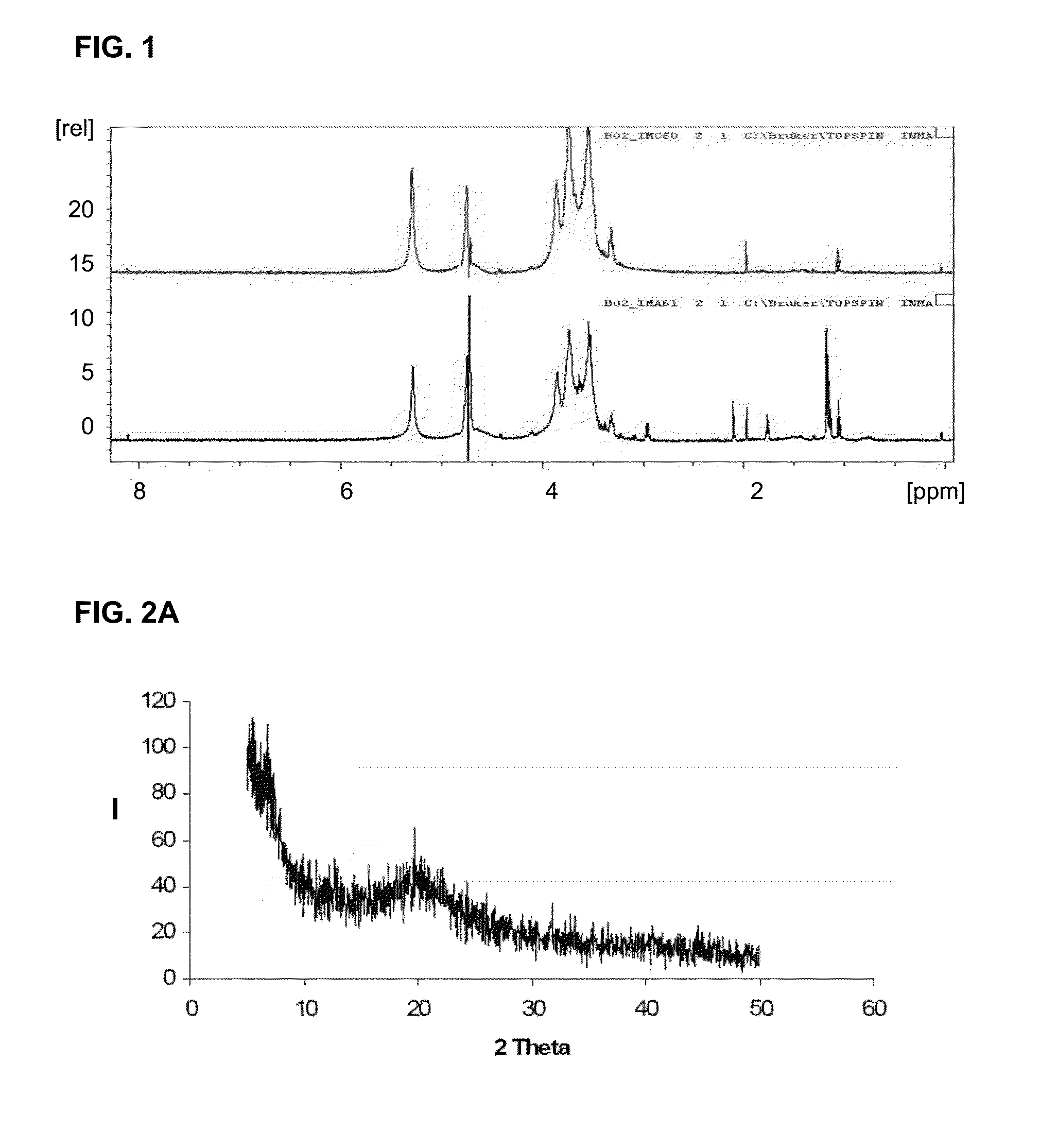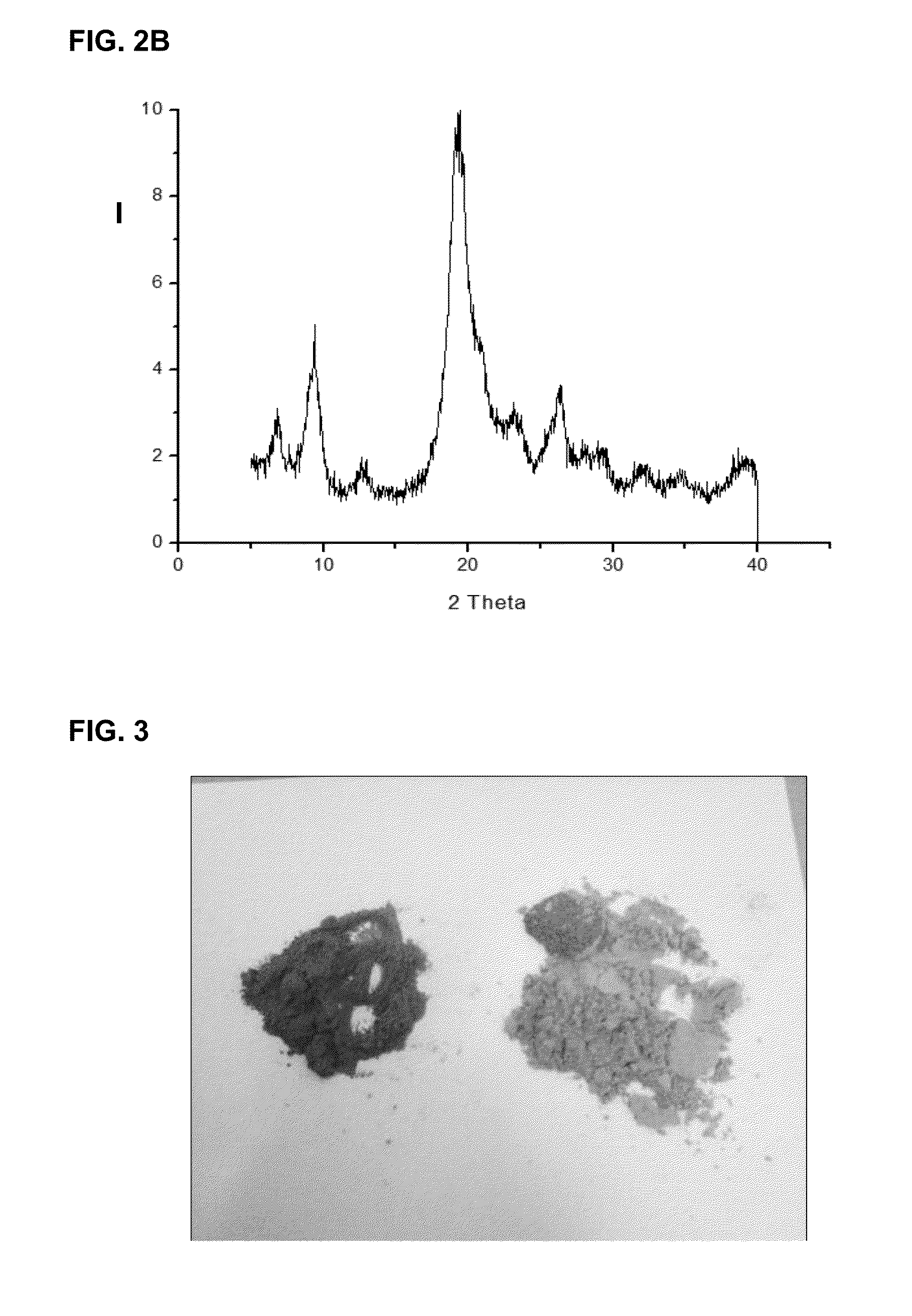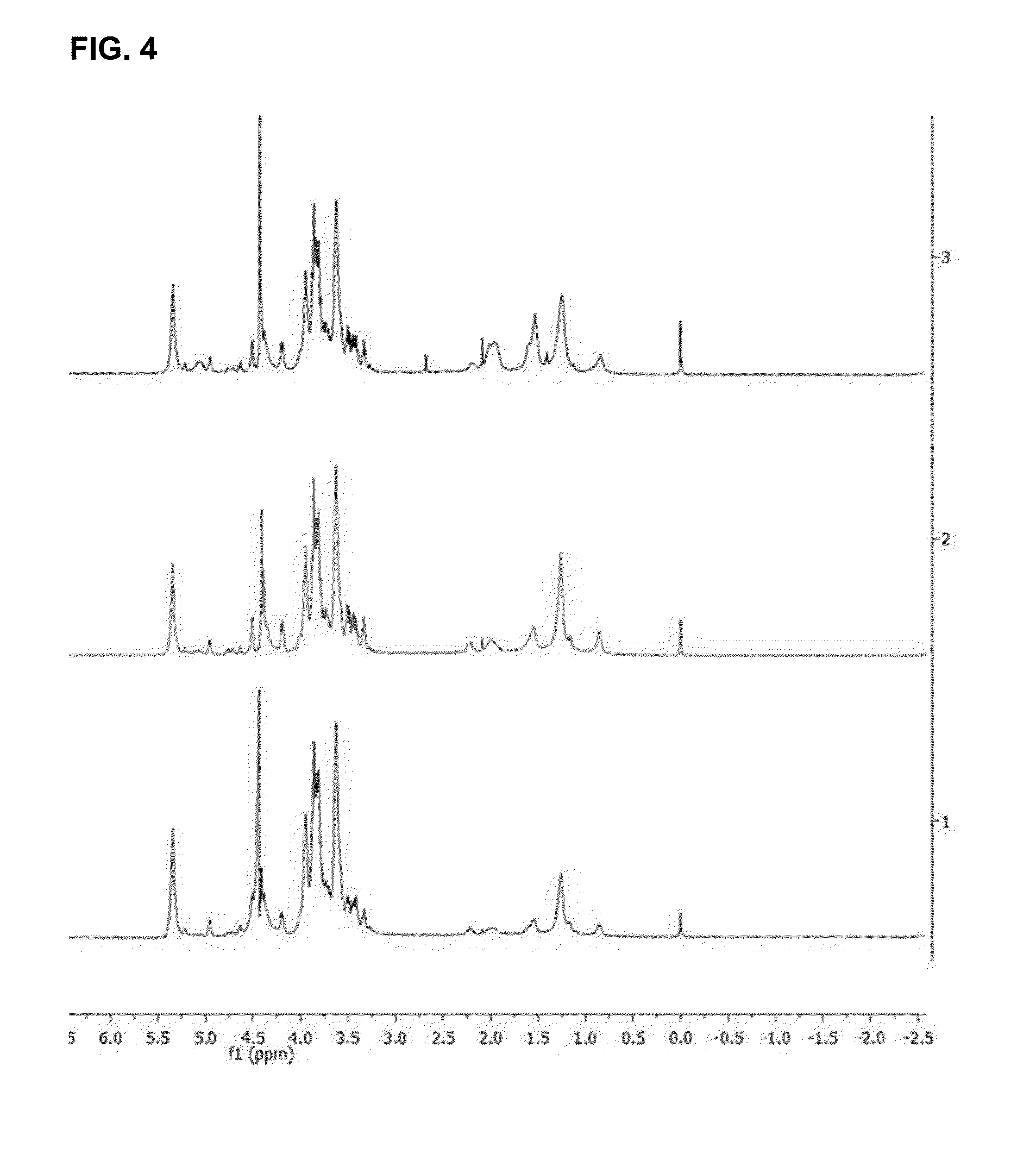Fat binder obtained from biomass resulting from beer production
a technology of biomass and fat binder, which is applied in the direction of botany apparatus and processes, plant ingredients, food preparation, etc., can solve the problems of increasing public health problems, affecting the quality of life, and excessive intake of cholesterol
- Summary
- Abstract
- Description
- Claims
- Application Information
AI Technical Summary
Benefits of technology
Problems solved by technology
Method used
Image
Examples
example 1
Process to Obtain the Polysaccharide Rich Composition (“DAMM Product”)
[0061]The Saccharomyces cerevisiae source to use as starting material derived from eight repeated uses in the brewing process. The brewing process by-product was sieved with a sieve of 1 mm in order to separate the S. cerevisiae biomass from impurities of the brewing process. The S. cerevisiae biomass obtained was dried in a heater and milled to obtain a powder.
[0062]Humidity of the yeast biomass was determined with a humidity analyzer IR Sartorius MA30. The reaction medium was prepared loading the reactor with distilled water, adjusting the stirring at 150 rpm, adding the amount of NaOH needed to obtain a NaOH solution 1 M and then heating the reaction medium at 80° C. Yeast biomass was weighed to a ratio of dry yeast biomass / reaction medium volume of 1 / 30. The yeast biomass was added to the hot reaction medium, and the reaction was maintained for 16 h. Once the reaction time elapsed, the product was chilled unti...
example 2
Product Characterization
[0065]In FIG. 1 an 1H-NMR analysis showed that DAMM product obtained at pilot scale (lower figure) presents the same functional groups compared to the product obtained previously at laboratory scale (upper figure) (this product is called “060” in the figure). FIG. 2 shows the diffractograms (X-ray) of DAMM product (FIG. 2A) and pure chitin (FIG. 2B). FIG. 3 shows the appearance of DAMM product.
[0066]Chemical analysis showed that DAMM product had a ratio of chitosan, chitin and beta-glucan of 1:14:116 and an atomic mass percentage of carbon, hydrogen and nitrogen of 40.32%, 6.35% and 0.24% respectively. The solubility of the product at pH 3.5 in distilled water was 710 mg / I.
example 3
Fat Binding Effects: In Vitro Selectivity Assays
[0067]Assays of fat binding and selectivity in the trapping of fats by GLC-MS were performed with the following lipids:[0068]Olive oil+cholesterol (25 mg cholesterol / ml of olive oil)[0069]Cotton seed oil[0070]Fish oil+elaidic acid (2.5 mg elaidic acid / ml fish oil)
[0071]The arguments for using these fats and not others were:[0072]They are complex mixtures of lipids, so information on the greater or lesser affinity for different types of fatty acids is obtained. Furthermore, the situation is close to a real intake.[0073]The use of fish oil is very interesting to test the degree of affinity for docosahexaenoic acid (DHA) and eicosapentaenoic acid (EPA), which due to their significant health benefits it is interesting to avoid their immobilization.[0074]The introduction of cholesterol in the assays with olive oil provides information on the ability to bind one of the most harmful fats from animal source.[0075]With these products, the degre...
PUM
| Property | Measurement | Unit |
|---|---|---|
| Temperature | aaaaa | aaaaa |
| Temperature | aaaaa | aaaaa |
| Temperature | aaaaa | aaaaa |
Abstract
Description
Claims
Application Information
 Login to View More
Login to View More - R&D
- Intellectual Property
- Life Sciences
- Materials
- Tech Scout
- Unparalleled Data Quality
- Higher Quality Content
- 60% Fewer Hallucinations
Browse by: Latest US Patents, China's latest patents, Technical Efficacy Thesaurus, Application Domain, Technology Topic, Popular Technical Reports.
© 2025 PatSnap. All rights reserved.Legal|Privacy policy|Modern Slavery Act Transparency Statement|Sitemap|About US| Contact US: help@patsnap.com



